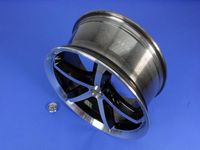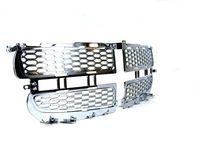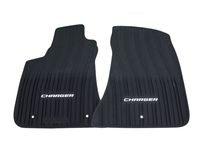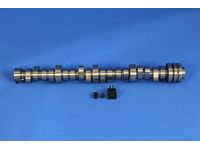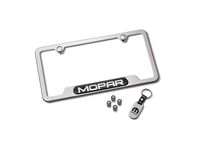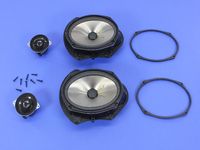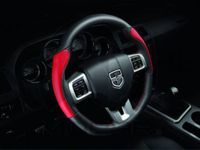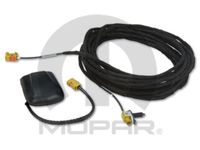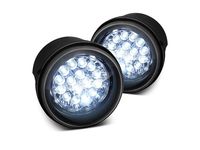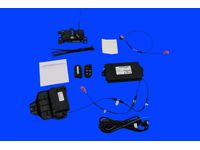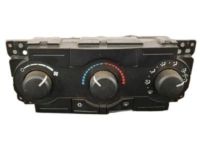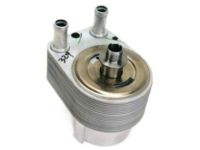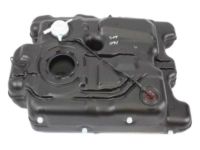Why choose MoparPartsGiant
- Fast Delivery
Your Dodge Charger deserves only Dodge Charger genuine parts from MoparPartsGiant.com. There's zero risk involved when buying from us because all our Dodge Charger auto parts are expedited directly from authorized dealers and backed by the manufacturer's warranty. For years, we've been the #1 Dodge Charger online parts store. Interested in faster shipping? We offer expedited shipping on corresponding orders!
- Dedicated Service
Our outstanding customer service team is here to help you by email, live chat, or phone call with any inquiries regarding your purchase. Dedicated representatives are standing by to assist you with your shopping needs. With a complete Dodge Charger parts catalog and a full selection of inventory, your parts are ready to be expedited anywhere in the nation without delays.
- Unbeatable Prices
For any genuine Dodge Charger parts you need for standard maintenance or repair, we carry them. With our unbelievably low prices on Dodge Charger parts, you won't go anywhere else for Dodge Charger parts. We are your one-stop shop for Dodge Charger parts without breaking the bank!
Popular Genuine Dodge Charger Parts
- Engine Parts View More >
- Electrical Parts View More >
- Fuel Parts View More >
- Body - Sheet Metal Except Doors Parts View More >
- Cooling Parts View More >
- Steering Parts View More >
- Interior Trim Parts View More >
- Transmission Parts View More >
- Brakes Parts View More >
- Suspension & Drive Parts View More >
- Emission Systems Parts View More >
- Exhaust Parts View More >
Shop Genuine Dodge Charger Parts with MoparPartsGiant.com
The Dodge Charger, a flagship model of Chrysler, has seen several iterations since its inception, evolving from a sports car to a luxury and economy vehicle. Launched as a competitive response to American Motors' Marlin and Mercury's Cougar, the Charger aimed to fill a new niche: a high-end, large sports car. Initially equipped with a base V8 engine and a three-speed manual transmission, the Charger also offered optional automatic transmission and powerful variants like the V8 Hemi. In 1968, a significant redesign led to the production of 96,100 units, exceeding the planned 35,000 due to high demand. With the third generation in 1971, the Charger adapted to new emissions and safety regulations with a redesigned B-chassis, offering six trims featuring various cosmetic changes. The fourth-generation Daytona model was characterized by its distinct lengthwise stripes. In 1981, the Charger transitioned to a front-wheel-drive compact coupe, similar but larger than the Dodge Omni 024, prioritizing fuel economy. Performance returned to the fore with the introduction of the Shelby Charger in 1983, and its turbocharged version in 1984, offering 142 horsepower from a small Garrett t3 turbocharger. The 2012 model saw the addition of a new eight-speed automatic transmission on the V6, while all-wheel drive was made available on all models except the SRT-8. Over the years, the Charger has consistently adapted to market trends and consumer demands, maintaining its position as an iconic and versatile automobile in the Dodge lineup.
As with any vehicle, the Dodge Charger isn't immune to wear and tear, and it may present issues over time. According to Charger owners, the most frequent issues include engine failure and problems with the emission and cooling systems. Owners have reported premature engine failure, often indicated by knocking noises on starting the vehicle, low oil pressure, and visible oil leaks around the oil drain plug or underneath the car. If such symptoms appear, it's advisable to inspect the rod bearing and oil pan. Meanwhile, issues related to the emission and cooling systems often surface as reduced engine power and acceleration, the Check Engine Light being persistently illuminated, black smoke emission, and deteriorating fuel economy. Cooling system issues could manifest as low coolant levels and leaks, leading to vehicle overheating. As these issues relate directly to the engine's performance, a check on the EGR valve gasket, radiator, oil cooler, and coolant temperature sensor could help maintain your Dodge Charger in optimum condition.
OEM parts are engineered to comply with official Dodge factory standards, guaranteeing easy installation and an impeccable fit. If you're seeking OEM Dodge Charger parts, like Doors, Door Mirrors And Related Parts, Air Conditioners & Heater, you've come to the right place. Our website specializes in offering the most competitively priced genuine Dodge Charger parts, such as Wiper & Washers And Cylinder & Keys. Each auto part we ship comes with the reassurance of the manufacturer's warranty and a commitment to swift delivery.
Dodge Charger Parts Questions & Answers
- Q: How to Remove and install the A/C Switch?A: To disconnect the cable from the negative battery terminal, detach the instrument panel center bezel. Then, disconnect the electrical connectors for the assembly. Remove the mounting screws and detach the A/C switch from the bezel. For installation, follow the reverse procedure. If the A/C switch is replaced, it may need calibration. This should be done at a dealer service department or a qualified repair shop with the appropriate tools.
- Q: How to Replace an Oil Cooler?A: To replace the oil cooler, start by raising the front of the vehicle and supporting it securely on jack stands. Drain the cooling system and remove the engine oil filter. For installation, clean the mating surfaces and use a new gasket. Align the cutout on the cooler with the tab on the oil pan and tighten the bolt while holding the oil cooler to prevent it from turning. Finally, install a new oil filter, refill the cooling system, and check the oil level, adding as necessary.
- Q: How to Remove a Fuel Tank from a Dodge Charger?A: Relieve fuel system pressure. Disconnect battery cable. Drain fuel from tank. Remove lower cushion and loam pad. Disconnect electrical connector from fuel pump/fuel level sensor module. Loosen rear wheel lug nuts and remove wheels. Disconnect quick-connect fittings for vent lines and fuel supply line. Remove under-body splash shields. Loosen hose clamps and disconnect fuel filler neck pipe. Remove exhaust pipe(s) and driveshaft. Support fuel tank and remove retaining strap bolts. Lower fuel tank and pull vent lines through gaps. Make final check of upper part of tank.



















































